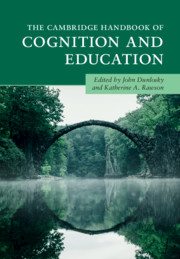Book contents
- The Cambridge Handbook of Cognition and Education
- The Cambridge Handbook of Cognition and Education
- Copyright page
- Contents
- Figures
- Tables
- Contributors
- How Cognitive Psychology Can Inform Evidence-Based Education Reform
- Part I Foundations
- Part II Science and Math
- Part III Reading and Writing
- 10 Fundamental Components of Reading Comprehension
- 11 Writing as a Learning Activity
- 12 Bilingualism and Education
- 13 Note-Taking
- 14 Multiple-Text Comprehension
- 15 Interventions to Promote Reading for Understanding
- Part IV General Learning Strategies
- Part V Metacognition
- Index
- References
11 - Writing as a Learning Activity
from Part III - Reading and Writing
Published online by Cambridge University Press: 08 February 2019
- The Cambridge Handbook of Cognition and Education
- The Cambridge Handbook of Cognition and Education
- Copyright page
- Contents
- Figures
- Tables
- Contributors
- How Cognitive Psychology Can Inform Evidence-Based Education Reform
- Part I Foundations
- Part II Science and Math
- Part III Reading and Writing
- 10 Fundamental Components of Reading Comprehension
- 11 Writing as a Learning Activity
- 12 Bilingualism and Education
- 13 Note-Taking
- 14 Multiple-Text Comprehension
- 15 Interventions to Promote Reading for Understanding
- Part IV General Learning Strategies
- Part V Metacognition
- Index
- References
Summary
- Type
- Chapter
- Information
- The Cambridge Handbook of Cognition and Education , pp. 266 - 291Publisher: Cambridge University PressPrint publication year: 2019
References
- 2
- Cited by



